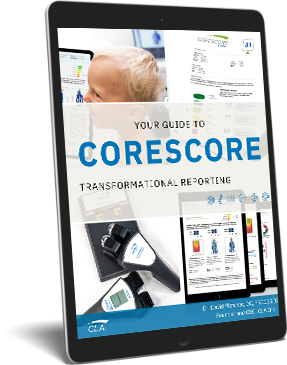By Dr. Christopher Kent
One of the pleasant tasks in editing “On Purpose” is the opportunity to screen hundreds of articles which have a direct bearing on health issues. From these, 60-to-80 per month are judged to be of particular interest to practicing chiropractors. Some studies, particularly those relating to back pain, are well-known to most D.C.s. These include the BMJ papers, the Manga report, etc.
However, there are fascinating papers which have been largely ignored by the profession. I offer five of my personal favorites from the last few years. They are not in any particular order. Each has tremendous potential for further investigation.
- Blanks RHI, Schuster TL, Dobson M: “A retrospective assessment of Network care using a survey of self-related health, wellness and quality of life.” Journal of Vertebral Subluxation Research 1997;1(4):15.
This is, to my knowledge, the largest study of its kind ever undertaken regarding a chiropractic population. The principal investigator is a full professor at a university medical school. This retrospective assessment of 2,818 respondents in 156 practices found a strong connection between persons receiving Network care and self-reported improvement in health, wellness, and quality of life. 95% of the respondents reported their expectations had been met, and 99% wished to continue care. Furthermore, the study indicated that the self-perceived benefits of care did not reach a plateau (at least for the duration of the period surveyed) but continued over time.
Besides the size and diversity of the study population, another strength is that it involved a specific technique protocol. Sadly, few in chiropractic know of it. It would be interesting to use the same instrument and experimental design with patients of other techniques.
- Coulter ID, Hurwitz EL, Aronow HU, et al: “Chiropractic patients in a comprehensive home-based geriatric assessment, follow-up and health promotion program.” Topics in Clinical Chiropractic 1996;3(2):46.
A detailed analysis of a database collected during a three-year randomized study of senior citizens over the age of 75 revealed that patients who received chiropractic care reported better overall health. Such persons used fewer prescription drugs, and were more active than non-chiropractic patients.
87% of the chiropractic patients described their health status as good to excellent, compared to only 67% of the non-chiropractic patients. The chiropractic patients spent 21% fewer days in hospitals and 15% fewer days in nursing homes than the non-chiropractic patients.
- Selano JL, Hightower BC, Pfleger B, et al: “The effects of specific upper cervical adjustments on the CD4 counts of HIV positive patients.” Chiropractic Research Journal 1994;3(1):32.
This small, controlled study deserves replication on a larger scale. The effect of specific upper cervical adjustments on the immune system CD4 cell counts of HIV positive individuals was studied. Half the patients received atlas adjustments based upon Grostic upper cervical analysis. The other half received a placebo in the form of an inactive adjusting instrument applied to the mastoid process. Over the six month period of the study, the control group experienced a 7.96% decrease in CD4 cell counts, while the adjusted group experienced a 48% increase in CD4 cell counts over the same period.
- Schneier M, Burns RE: “Atlanto-occipital hypermobility in sudden infant death syndrome.” The Journal of Chiropractic Research and Clinical Investigation 1991;7(2):33.
In this triple-blind study conducted in cooperation with the coroner’s office, cervical radiographs were taken of infants who died during the study period. The authors described the phenomenon of “atlas inversion” where the posterior arch of C-1 enters the foramen magnum. They further stated, “Relative measurements suggested that a correlation existed between instability in the atlanto-occipital articulation and sudden infant death syndrome.”
- Rupert RL, Manello D, Sandefur R: “Maintenance care: Health promotion services administered to US chiropractic patients aged 65 and older, Part II.” Journal of Manipulative and Physiological Therapeutics 2000;23(1):10.
This study involved 73 chiropractic patients. They were asked, “How important do you feel chiropractic treatment has been in maintaining and promoting your health?” 95.8% believed it to be either “considerably” or “extremely” valuable.
There was a significant correlation between the reduced use of nonprescription drugs and the number of years of maintenance care. Decreased smoking also correlated with years of maintenance care. The study noted that, “Chiropractors may administer more prevention and health-promotion services than any other health profession.”
There are many more such papers, which I may review in subsequent columns.
Those mired in musculoskeletal myopia would do well to give these a read. The benefits of chiropractic care are as broad as the scope of influence of the human nervous system. It is essential that we protect the right of our patients to receive lifetime, subluxation-based chiropractic care. Anything less is an abdication of our “sacred trust.”




























































